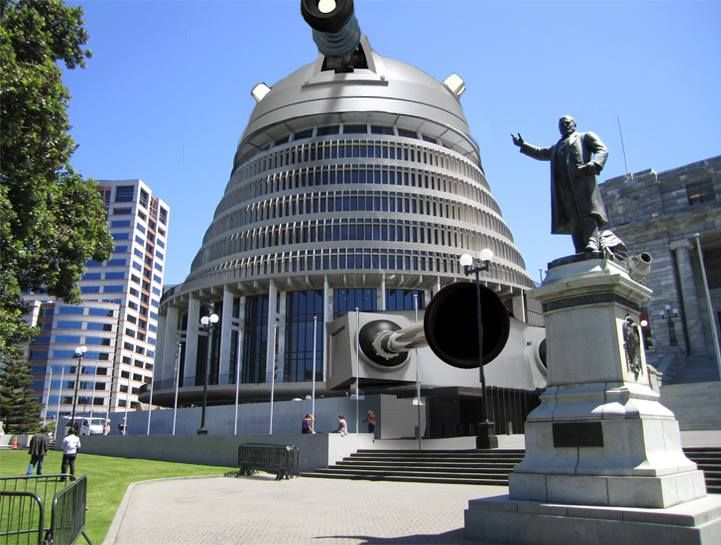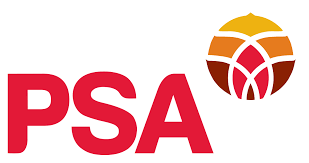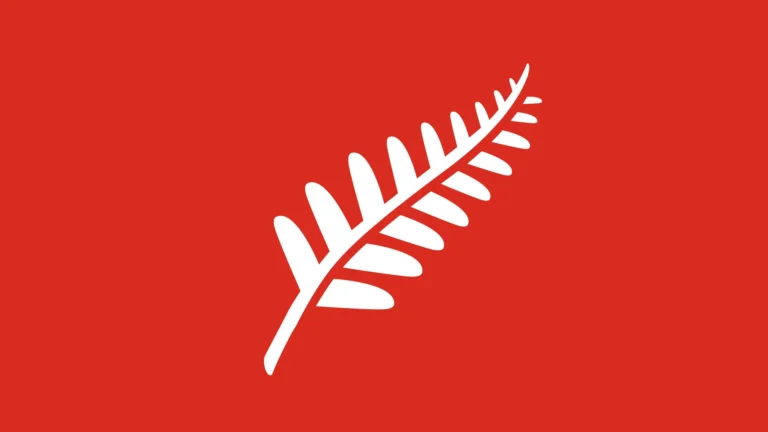In an era where rapid scaling and aggressive growth dominate business headlines, one New Zealand entrepreneur took the opposite approach—and built a thriving nationwide operation as a result. Morgan Kircher’s journey transforming Alert Building Inspections from a single-person operation into a network spanning multiple locations across both islands proves that sometimes the slowest path to growth creates the strongest foundation.
His success challenges conventional wisdom about service business expansion. Whilst competitors rushed to grow quickly, Morgan deliberately chose constraints that made scaling harder. While others competed on price, he competed on expertise. Whilst the industry operated on opacity, he embraced radical transparency. Each decision seemed to make business harder in the short term—yet collectively they created a competitive position that’s nearly impossible to replicate.
The Real Problem Nobody Was Solving
Surface-level analysis suggested the building inspection market was simple: property buyers needed inspections, and hundreds of independent operators provided them. But Morgan identified a more nuanced reality. Buyers weren’t just looking for inspections—they needed qualified professionals who could deliver comprehensive reports quickly enough to make time-sensitive property decisions.
Many inspectors offered one or the other: qualified expertise with slow turnaround, or quick service with questionable credentials. Few delivered both simultaneously. This gap became the cornerstone of Alert’s value proposition: trade-qualified builders providing comprehensive reports within 24-48 hours.
The insight reveals a crucial lesson for service businesses: superficial market analysis identifies competitors, but deep customer understanding reveals genuine opportunities. The businesses that thrive don’t just solve obvious problems—they address the complete customer need that others overlook or consider too difficult to meet.
The Growth Constraint That Became a Competitive Moat
When expanding Alert Building Inspections, Morgan faced a critical decision: recruit quickly with lower standards, or grow slowly whilst maintaining quality requirements. He chose the harder path, insisting every inspector be a trade-qualified builder with extensive construction experience.
This decision created immediate challenges. Finding qualified builders willing to work within a network model isn’t easy. Expansion became frustratingly slow. Revenue growth lagged behind what aggressive recruitment could have achieved. Yet this constraint simultaneously created something invaluable: a quality standard competitors couldn’t easily match.
Inspectors like David and Joe brought decades of hands-on construction knowledge to every assessment. Craig’s background working in Auckland Council’s building section provided deep insight into compliance requirements. These weren’t simply people trained to spot defects—they were professionals who understood building systems, construction methods, and regulatory frameworks from years of direct experience.
The lesson challenges growth-at-all-costs thinking: sometimes your biggest constraints create your strongest advantages. Whilst rapid expansion feels exciting and slow growth feels frustrating, maintaining high standards builds long-term value that competitors struggle to replicate. The very requirement that made Alert’s expansion difficult—trade qualifications—simultaneously made their service quality nearly impossible for competitors to copy at scale.
Transparency as Strategic Weapon
In an industry where most operators required quote requests before revealing prices, Morgan made a bold decision: display pricing openly on Alert’s website. Standard pre-purchase inspections cost $499 plus GST. Verbal reports cost $299 plus GST. No hidden fees, no quote negotiations, no pricing games.
This transparency accomplished multiple strategic objectives simultaneously. It pre-qualified leads by filtering customers seeking unrealistically cheap services. It built trust by demonstrating openness and confidence. It reduced wasted administrative time by answering the most common initial question immediately. And it positioned Alert as a professional operation competing on value rather than trying to be the cheapest option available.
The strategy worked because Alert had genuine value to justify their pricing. Their inspections follow the New Zealand Standard for Property Inspections (NZS4306:2005). Their reports are accepted by all major banks. They carry full indemnity insurance. Every inspector brings trade qualifications and construction experience. These credentials support premium pricing whilst delivering genuine value.
The transparency gamble reveals an important principle: open pricing works when you’re confident in your value proposition. If you’re competing primarily on price, transparency might hurt. But if you’re competing on quality, expertise, and reliability, transparency becomes a trust-building tool that attracts better customers whilst repelling unprofitable enquiries.
The Network Model That Delivered Local Expertise at Scale
Rather than attempting to grow through a centralised operation, Alert established a network model with qualified inspectors in key population centres from Whangarei to Dunedin. This approach provided crucial advantages that centralised operations couldn’t match.
Local inspectors understand region-specific building challenges. They know how coastal weather affects Wellington properties. They recognise earthquake considerations relevant to Christchurch buildings. They understand clay soil movement patterns affecting Auckland foundations. They respond quickly without travel delays and build relationships within local property and real estate communities.
Yet they all operate under consistent quality standards, follow the same inspection protocols, use standardised reporting systems, and represent the same brand identity. The network model delivered both local expertise and systematic consistency—advantages typically considered mutually exclusive.
This demonstrates that scalable doesn’t always mean centralised. For location-dependent services, networks of local experts operating under consistent standards can outperform centralised operations. The key is establishing clear quality requirements and operational systems whilst allowing local adaptation where it genuinely adds value.
Strategic Diversification Without Dilution
Beyond standard pre-purchase inspections, Alert intelligently expanded into complementary services. Safe and Sanitary reports for council compliance issues. Methamphetamine testing addressing contaminated property concerns. Verbal inspection reports for time-critical situations. Commercial building assessments for business properties.
These services share crucial characteristics: they all leverage the same core expertise (building assessment) whilst addressing different customer needs and situations. They create multiple revenue streams without requiring completely different skill sets or dramatically different operational processes. They attract different customer segments without fragmenting the core business model.
This approach reveals effective diversification principles: identify adjacent opportunities that leverage existing expertise and infrastructure. Don’t chase unrelated revenue streams just because they seem profitable. Focus on services where your current competitive advantages remain relevant and valuable.
Technology as Enhancement, Not Replacement
Alert Building Inspections embraced technology systematically whilst maintaining focus on human expertise. Their website achieves exceptional performance scores and comprehensive search optimisation, ensuring potential customers find their services easily. Location-specific landing pages capture local search traffic. Digital report delivery ensures quick turnaround regardless of location.
But technology enhances rather than replaces the core value proposition. The inspections themselves still require experienced trade-qualified builders physically examining properties. Technology handles efficiency, convenience, and accessibility—whilst humans provide the expertise, judgement, and detailed assessment that creates actual value.
This balance demonstrates effective technology adoption: use it to amplify competitive advantages, not replace them. Let technology remove friction from customer acquisition and service delivery. But don’t eliminate the human expertise that makes your service genuinely valuable.
Principles That Transfer Across Industries
Alert Building Inspections’ success offers lessons applicable far beyond building inspections. Whether you operate a consulting practice, trades business, professional service, or local operation, the underlying principles remain relevant:
Deep customer understanding reveals opportunities shallow analysis misses. Don’t just identify what customers say they want. Dig deeper to understand their complete needs, frustrations, and decision-making constraints. The businesses that win are those addressing the full customer problem.
Growth constraints often create competitive moats. The requirements that make scaling difficult—specialist expertise, certification standards, quality thresholds—frequently create the strongest long-term advantages. Embrace constraints that strengthen your position even when they slow expansion.
Transparency works when value is genuine. If you’re confident in your value proposition, open pricing builds trust, pre-qualifies customers, and improves efficiency. If you’re not confident enough for transparency, that’s a signal to strengthen your offering rather than hide your pricing.
Scalability doesn’t require centralisation. For location-dependent services, networks of local experts operating under consistent standards can deliver both local knowledge and systematic quality. The key is establishing clear requirements whilst allowing beneficial local adaptation.
Effective diversification leverages existing strengths. Additional revenue streams work best when they use current expertise and infrastructure rather than requiring completely new capabilities. Look for adjacent opportunities, not unrelated ventures.
Technology should amplify, not replace, differentiators. Use technology for efficiency, convenience, and reach—but maintain the human expertise that creates genuine value and justifies premium pricing.
The Counterintuitive Path to Sustainable Success
Morgan Kircher’s journey building Alert Building Inspections challenges conventional wisdom about service business growth. He chose quality over speed, transparency over pricing games, systematic constraints over rapid expansion, and long-term positioning over short-term revenue maximisation. Each decision seemed to make business harder in the moment—yet collectively they created a competitive position that’s difficult to replicate and continues strengthening over time.
This approach demonstrates that traditional service industries still offer enormous opportunities for entrepreneurs who combine genuine expertise with strategic thinking. The businesses that thrive aren’t necessarily those with the most innovative technology or the flashiest marketing—they’re the ones that deeply understand customer needs, deliver consistent quality, and build systematic approaches to sustainable growth.
What market gaps are hiding in plain sight in your industry? Where could deliberate constraints create stronger competitive positions than aggressive expansion? What would transparency reveal about the confidence you have in your value proposition? The opportunities exist across countless service industries. The question is whether you’re willing to take the counterintuitive path that leads to sustainable success.























